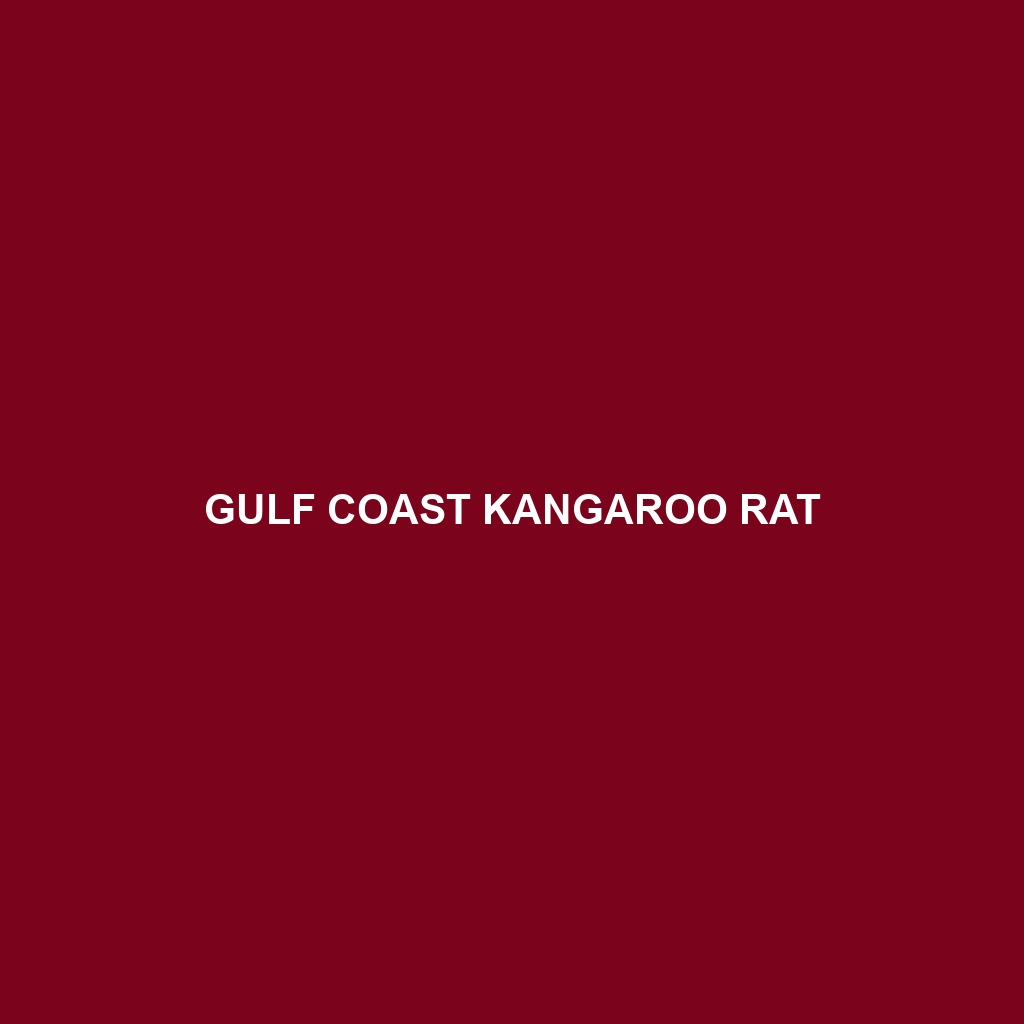Gulf Coast Kangaroo Rat
Common Name: Gulf Coast Kangaroo Rat
Scientific Name: Dipodomys compactus
Habitat
The Gulf Coast Kangaroo Rat is primarily found in the coastal regions of the Gulf of Mexico, particularly in parts of Texas and Louisiana. These rodents inhabit sandy and well-drained soils, thriving in coastal grasslands and shrublands. Their preferred habitat includes regions with sparse vegetation, where they can easily burrow and seek shelter from predators.
Physical Characteristics
The Gulf Coast Kangaroo Rat is a medium-sized rodent, averaging about 10-12 inches in length, including their long, tufted tail. They exhibit a light brown to grayish coloration with a white underbelly, which serves as effective camouflage against the sandy terrain. Their large hind legs are distinctive, allowing them to leap distances of up to 9 feet, a characteristic that aids in evading threats. Additionally, their large eyes and ears are adaptations for a nocturnal lifestyle.
Behavior
This species is primarily nocturnal, emerging at dusk to forage for food. Gulf Coast Kangaroo Rats are known for their unique hopping movements, which they use to navigate their environment swiftly. They are solitary animals, often establishing home ranges within a small area. Their burrowing behavior is vital as they construct complex tunnel systems that serve as refuges from extreme weather and predators.
Diet
The diet of the Gulf Coast Kangaroo Rat consists mainly of seeds, grains, and occasionally roots. They are particularly fond of seeds from grass and wildflowers that thrive in their coastal habitats. Their ability to store food in their burrows helps them survive through periods when resources are scarce, making them crucial seed dispersers in their ecosystem.
Reproduction
Breeding occurs in the spring and early summer months, with female Gulf Coast Kangaroo Rats giving birth to an average of 3-5 offspring per litter. After a gestation period of about 30 days, the young are born blind and hairless, relying on their mother for nourishment and protection in their early stages of life. Weaning typically occurs around 3 weeks, at which point the young begin to explore their environment.
Conservation Status
The Gulf Coast Kangaroo Rat is currently classified as vulnerable due to habitat loss from urban development, agriculture, and natural predation. Conservation efforts are being implemented to preserve their coastal habitats and ensure the survival of this unique species.
Interesting Facts
One fascinating aspect of the Gulf Coast Kangaroo Rat is its ability to extract moisture from the seeds it consumes, allowing it to survive in arid environments without needing to drink water. Additionally, these rodents can leap over obstacles, which aids in evading predators such as coyotes and snakes.
Role in Ecosystem
The Gulf Coast Kangaroo Rat plays a significant role in its ecosystem by acting as a seed disperser, contributing to plant diversity in their habitat. Their burrowing activities aid in soil aeration, which benefits other plant and animal species. As prey for various mammals and birds, they also serve a crucial role in the food web of their coastal environment.
